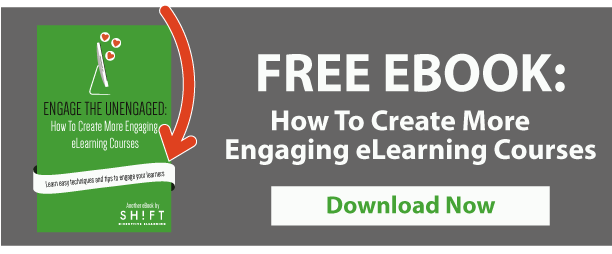Instructional design is not a one-person assignment limited to a single task. There are multiple disciplines involved in it, with the instructional designer assuming a series of roles to complete the job. This idea was presented in the paper, The roles of design: a new method of instructional design. In this document, authors provide designers with a series of viewpoints to consider throughout the development process.
Each role is a crucial part of the process, all roles are equally important. The instructional designer is part engineer, part architect, part artist, and part craftsman. It definitely entails a lot of flexibility or the ability to balance roles.
Whether or not you're new to the practice, integrating these four design roles can help improve your workflow and, by extension, your work. Here's a brief preview of each role.
Development can be done with a manufacturing approach, but the authors suggest that a craftsperson will add more to the resultant product, due to a focus on quality and continual improvement of design, method, and product. No one role supersedes the others in
importance. Balance between the roles is the key.

1) The Instructional Engineer
The engineer in every instructional designer focuses on the problem-solving aspect of the design. To do this, the engineer applies learning models derived from research. The role ensures that the instructional material or product is highly usable—that it enables target audience to achieve their goals.
There are important aspects of the design process that the instructional engineer is directly involved in:
- The use of research-based and and pedagogically-sound ideas for developing instructional materials
- The application of educational theory
- The implementation of technical features to ensure the products work.
These are important to ensure that the work—which definitely includes the process of planning and organizing the project—is efficient.
Quick Points:
- A deductive approach is employed.
- Relies on scientific facts and utilize systematic analysis in the form of inputs and measurements.
- Planning and organizing is the primary strategy.
2) The Instructional Manufacturer
While the engineer offers valuable insight to the process, most of the materials produced are done by a technically skilled manufacturer or maker.
The instructional manufacturer is responsible for applying pre-defined templates designed to solve problems as efficiently as possible. Manufacturers face several common challenges but the chief among them is the quantity or number of functional educational materials produced. For this, the manufacturer has to rely on simple, efficient and quick-to-implement formulas of making products.
Quick Points:
- The main task is to consistently produce functional and predictable materials.
- The role demands efficiency, consistency, speed and completion of assigned tasks.
- The manufacturer in every instructional designer helps lay the foundation for a better project development.
- Use ID models to speed up the process.
3. The Instructional Craftsperson
This role is a positive, additive and generative aspect of the instructional design process. As a craftsperson, the designer implements the design and continuously improves it.
Unlike previous roles that rely heavily on research and theoretical foundations, the craftsperson mindset adds value to the process with its high level of execution skills.
While the manufacturer prioritizes speed, the craftsperson does things at his or her own pace—it's done when it's done. He or she is primarily concerned with the product, both its technical and aesthetic aspects.
The craftsperson, more importantly, knows what true innovation entails—developing new ways of teaching or new approaches to learning.
Quick Points:
- An iterative approach is employed.
- Trying out something new (trial and error) is an important aspect of their design strategy.
- They value both utility and aesthetics.
- They rely on practical experience.
4. The Instructional Architect
The architect in every instructional designer is trained to see things from a wider perspective. Seeing the holistic view, the instructional architect applies a broader approach to the design process, integrating all discrete functions, from the initial conceptualization to the final evaluation.
Instructional architects are simply not satisfied with solving problems. They push the process to its limits by exploring innovative solutions, and even by moving beyond the problem's technological and educational specifications. Because of this, architects keep up with the latest research and technologies and work with a variety of tools and media. While the craftsperson is primarily concerned with the usability and aesthetics of the product (not with learners), the instructional architect focuses on integrating the needs of learners and the client.
Quick Points:
- A broad range of responsibilities is assumed.
- Because of their holistic viewpoint, they look across the entire project.
- A balanced approach to instructional design is employed.
5. The Instructional Artist
Last but not the least is the instructional artist. He or she is also considered as an instructional explorer, one that relies on creative insights. In fact, the successful designer is an artist preoccupied with exploring ideas no matter how different or unusual they are. These ideas may fail or break the mold, which works just fine for the artist who has already embrace experiments, unexpected results and failure as part of the work.
The artist brings the craftsperson's work to the next level by understanding and developing new ideas. As a “what if” person, the artist experiments with tools, media and affordances and thus inspire and direct the aesthetic aspect of the project. Without the artist, it's likely that your instructional material is just another well-designed project–one that exists elsewhere.
Quick Points:
- They value novelty and rely on creative insight.
- They employ an inductive decision-making process.
- Visioning or developing a plan for the future is their primary strategy.



